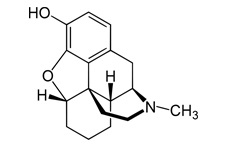Written by: Greg Ellifritz
The latest paranoia to be circulated around the internet is the presence of the new drug “Krokodil” on the streets of small town USA. Apparently there have been a few confirmed hospitalizations in the western USA within the last month because of this dangerous drug. Several people have written to me asking for information on this drug trend, so I’ll take a little time to pass on the basics.
“Krokodil” isn’t really a new drug. It’s chemical name is Desomorphine and it was first synthesized here in the 1930’s as a pain killer. It’s 10x more powerful than Morphine, but is much shorter acting. It was scrapped by drug companies because of its short pain killing effects and high addiction potential.
In 2003, it resurfaced prominently in Russia. Bathtub chemists found a way to cook it up using easily available ingredients. It became a huge addiction problem in Russia and has now made it to the USA, with several recent cases appearing in Arizona hospitals. The preparation of the drug is fairly simple and is actually very similar to the way tweakers make Methamphetamine.
The raw ingredient is Codeine. Drug chemists buy Codeine pills (like Tylenol 3) and use solvents such as gasoline, lighter fluid, or paint thinner to separate the Codeine from the other ingredients (acetaminophen) in the tablet. Once separated, they add such ingredients as red phosphorus (scraped from matches), lye, and iodine to make the “Krokodil.” The entire process takes about an hour and doesn’t require any complex procedures or laboratory equipment.
The drug gets its name because when users inject it, the toxic chemicals mentioned above damage body tissue. The skin in the area of the injection site turns scaly, gangrenous, and green in color…hence the name “Krokodil,” Russian for crocodile.
It’s a nasty drug, but I really don’t think it will have much of an impact here in the USA for two reasons…
1) Codeine (the raw ingredient) is over-the-counter in countries like Russia where the drug is most popular. It requires a prescription here. With limited amounts of raw ingredient, production will never be as high as it is in other countries.
2) The countries that have a problem with this drug have very limited treatment facilities for addicts. When people get hooked on painkillers or heroin and don’t have options to treat their addictions, they turn to Krokodil when they run out of money for their preferred opiates.
I believe most users in the USA will seek free or reduced cost drug treatment rather than injecting hazardous waste into their veins. With heroin prices declining as the Mexican drug cartels refine their supply lines into the USA, I don’t see Krokodil as a necessary substitute. When you can buy a $4.00 baggie of heroin, you don’t need to cook this stuff up in your bathtub.
This is a drug to keep an eye on, but it really doesn’t merit the amount of attention the media is giving it. You won’t be seeing it sold at your child’s elementary school in the near future.
If you are looking for more information on any drug, I would suggest checking out Erowid. That website provides the most balanced and complete drug information on the internet. The Erowid page for Krokodil is HERE.
If you would like to see more articles like this, please sign up for my email updates.




